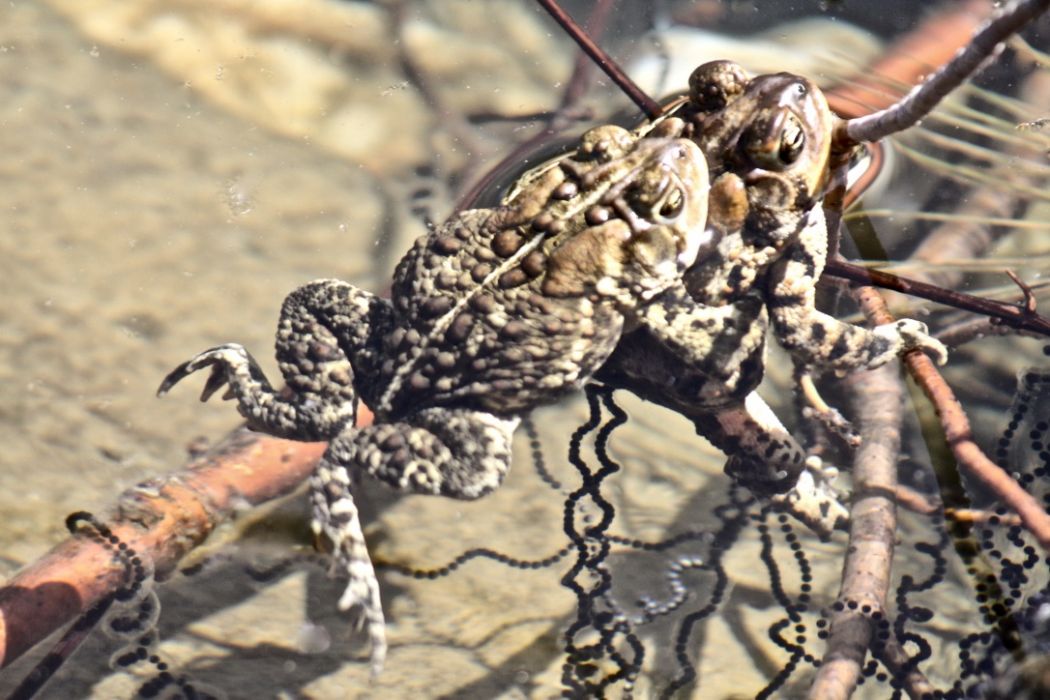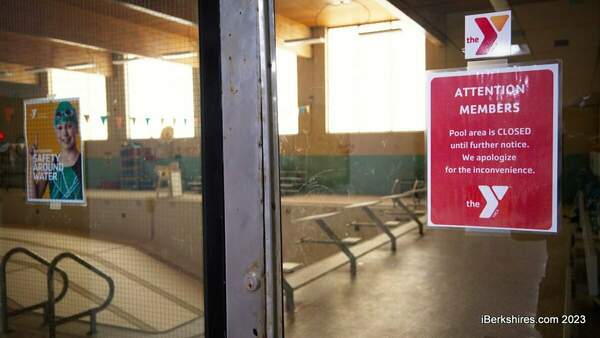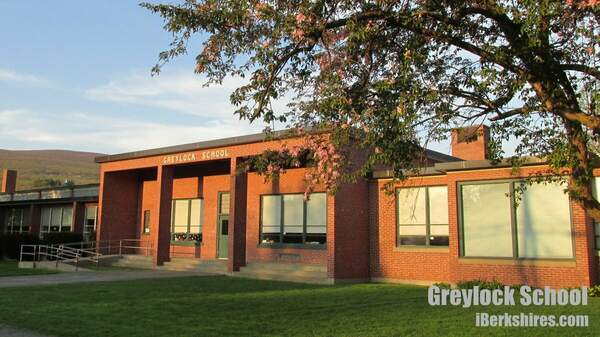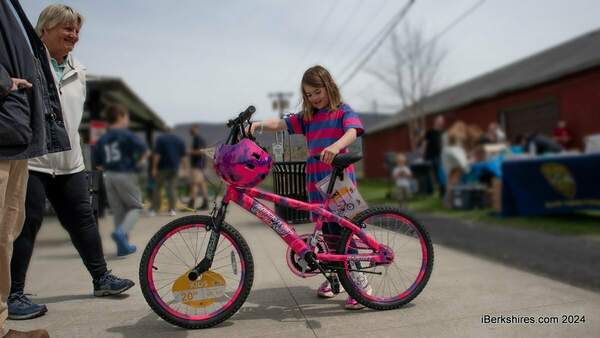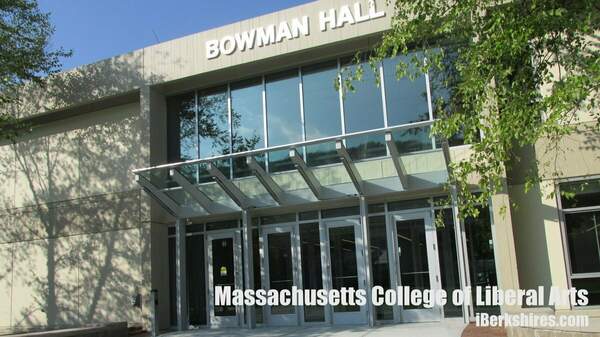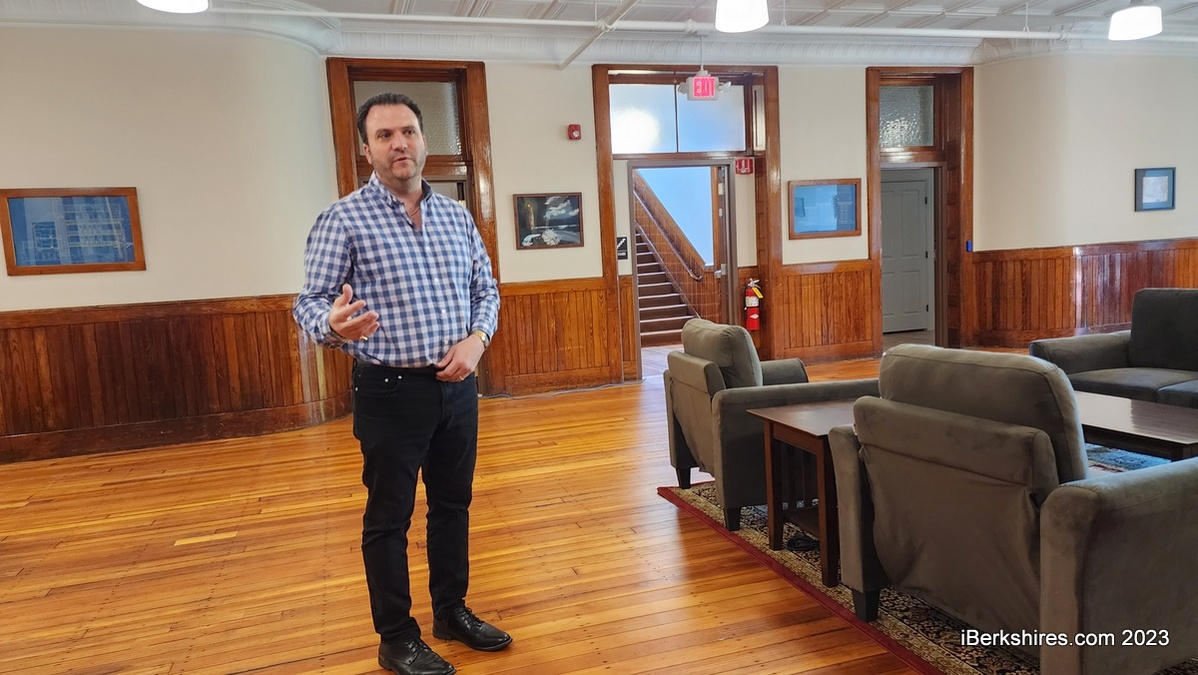
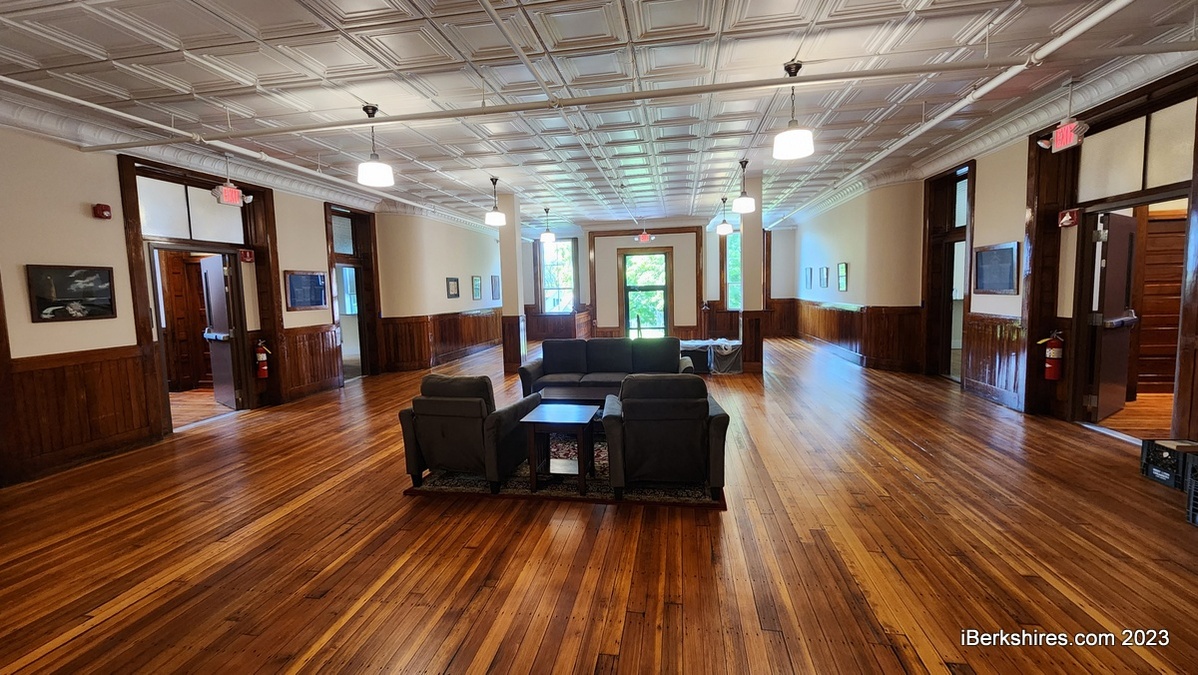
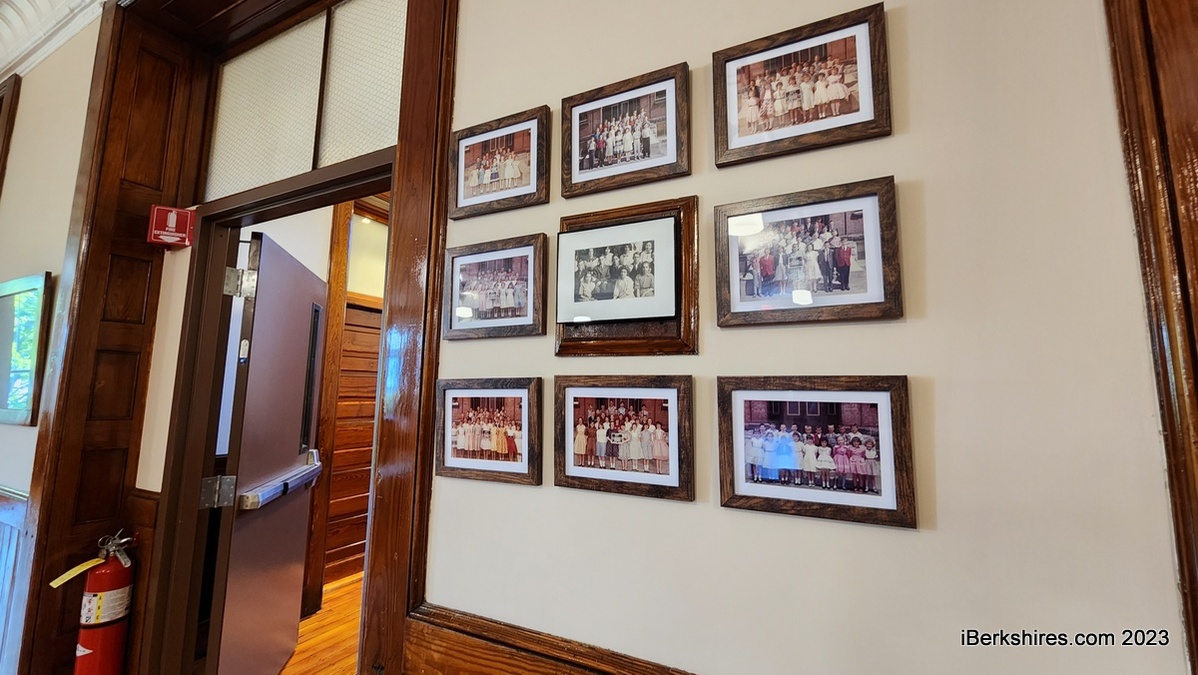
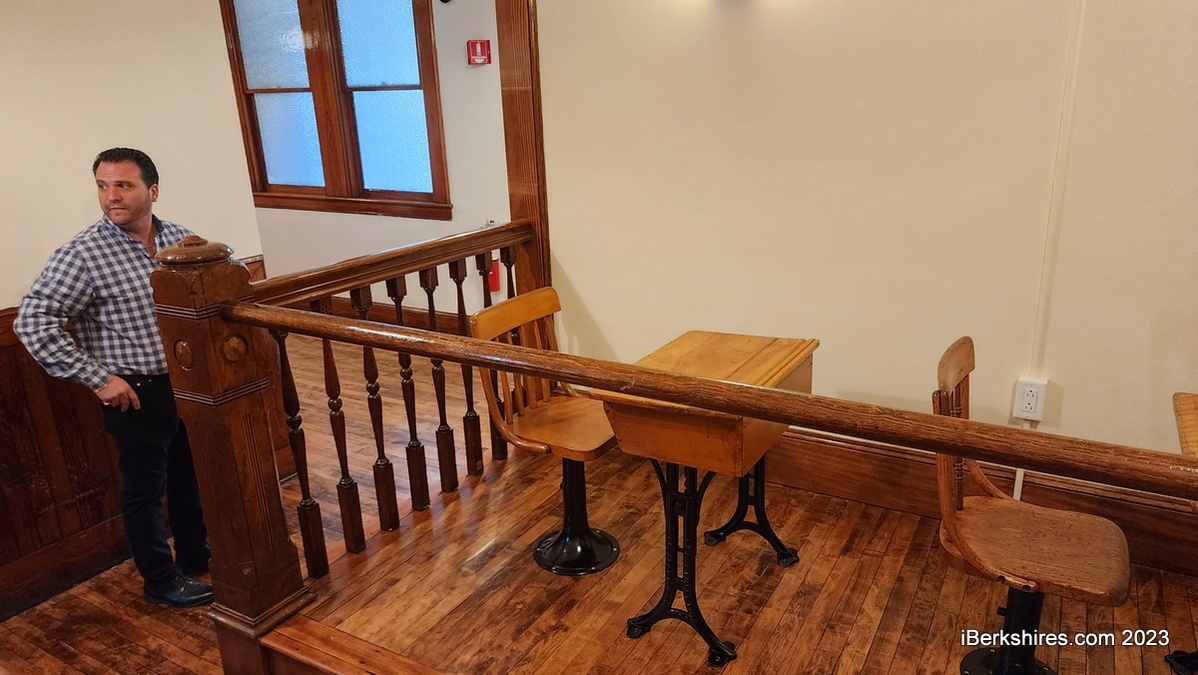
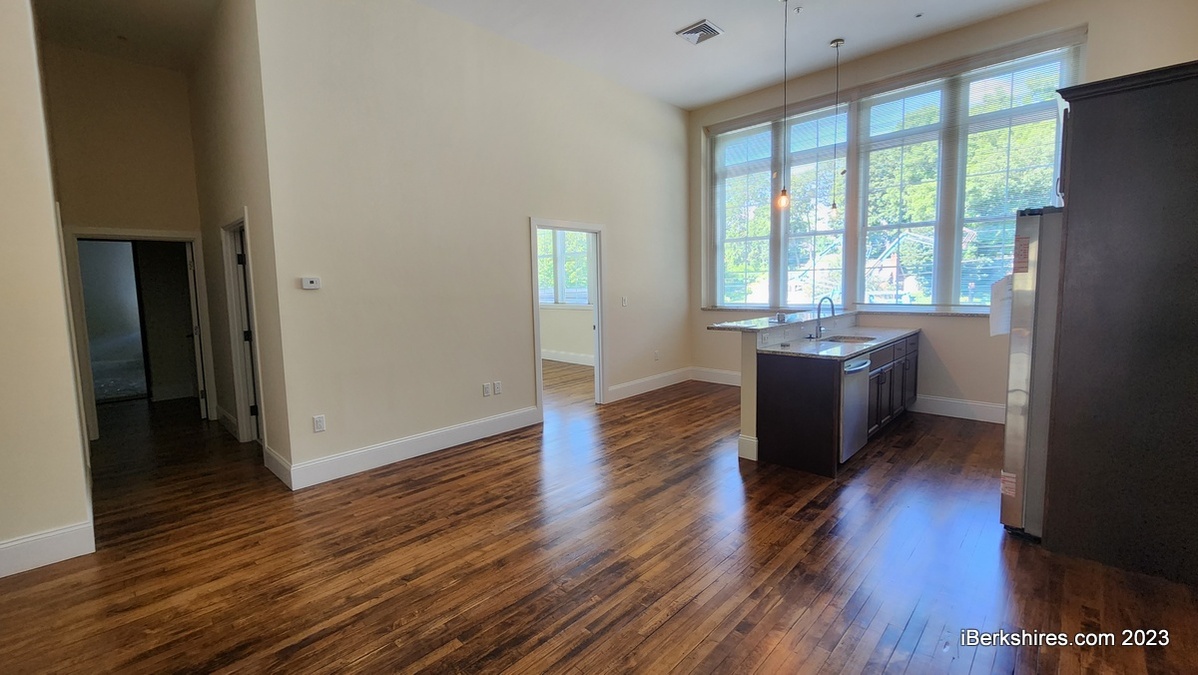
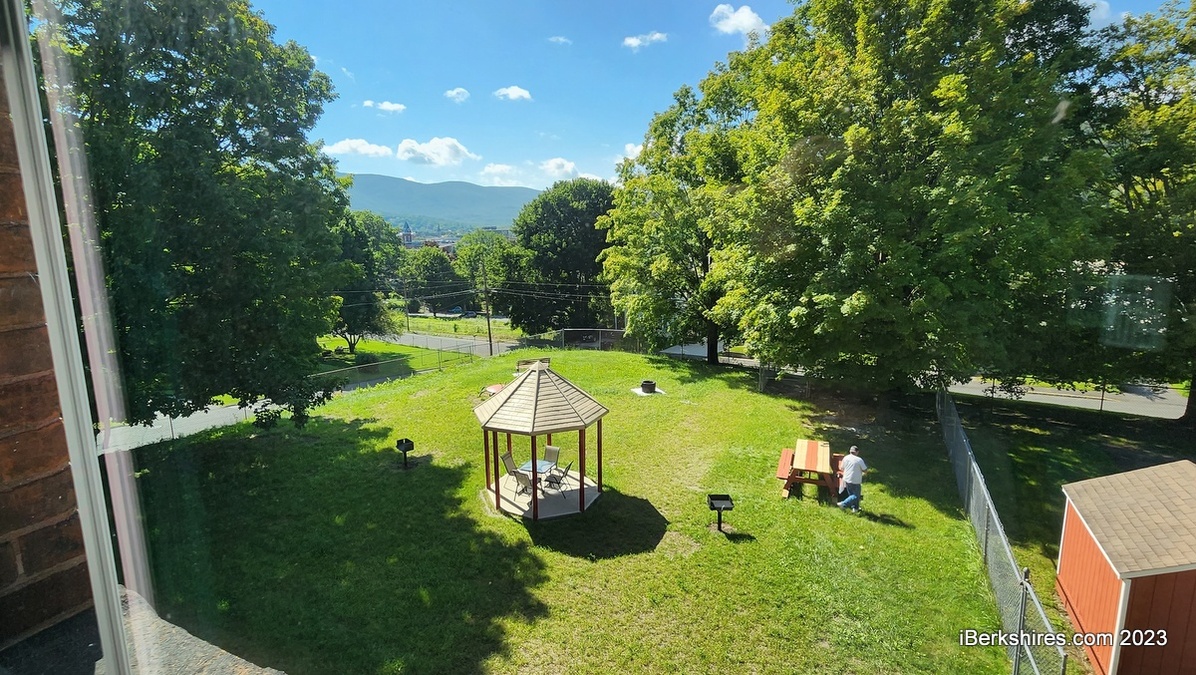
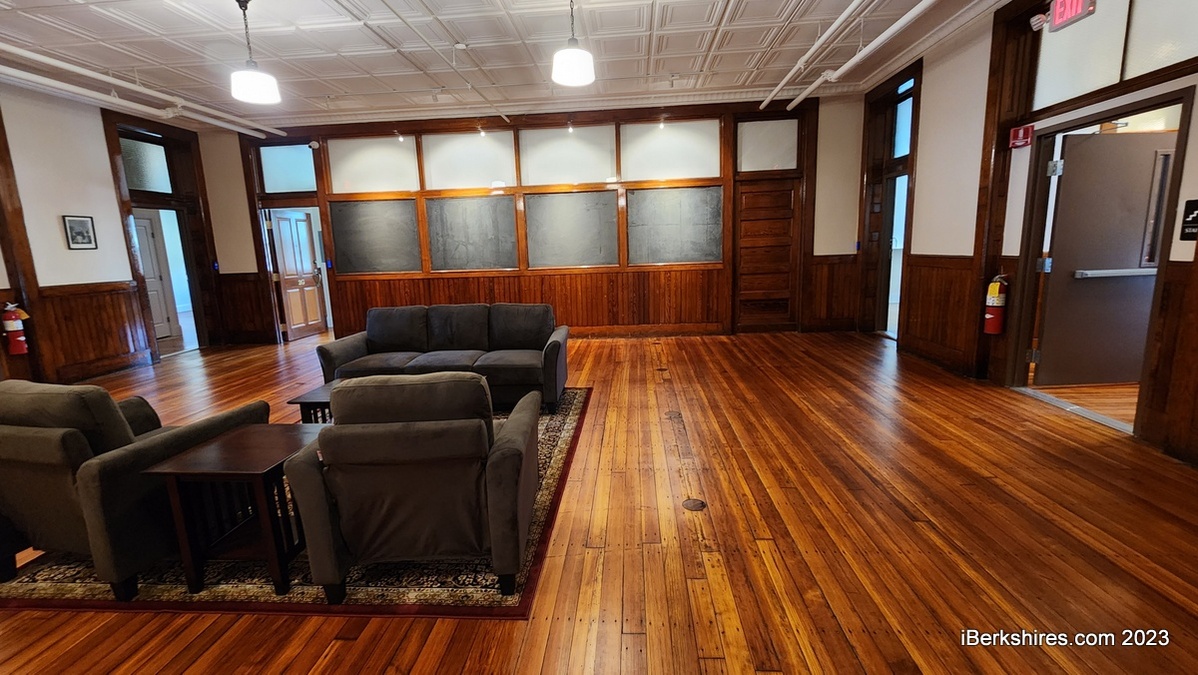
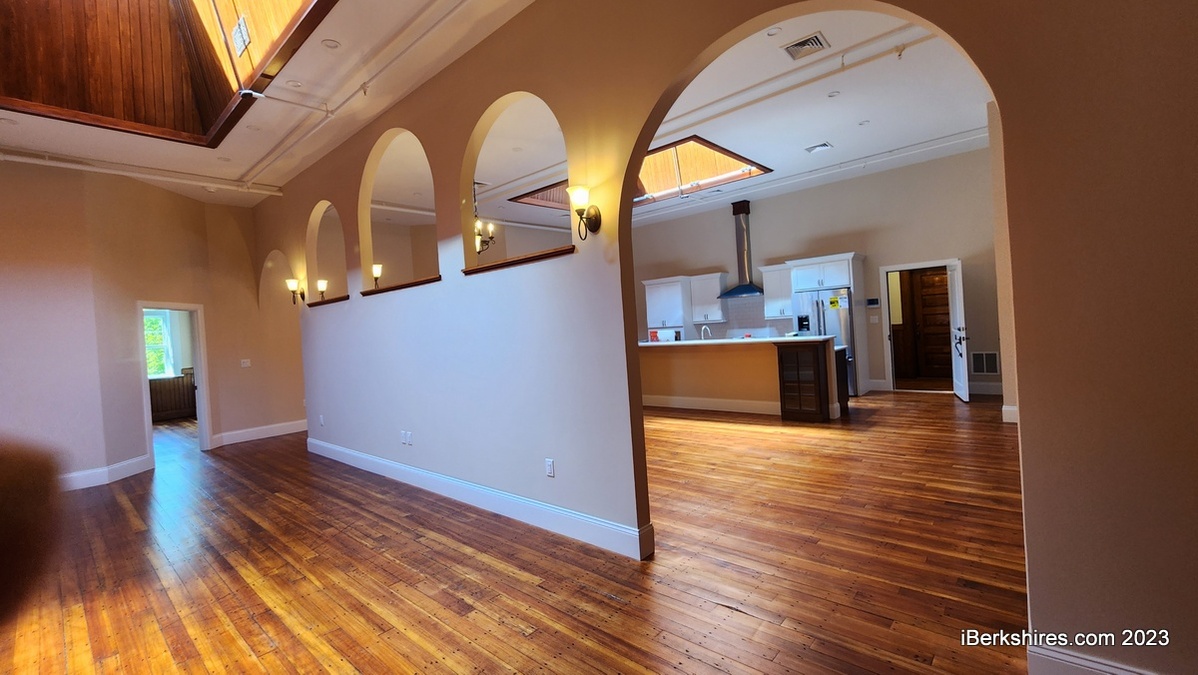
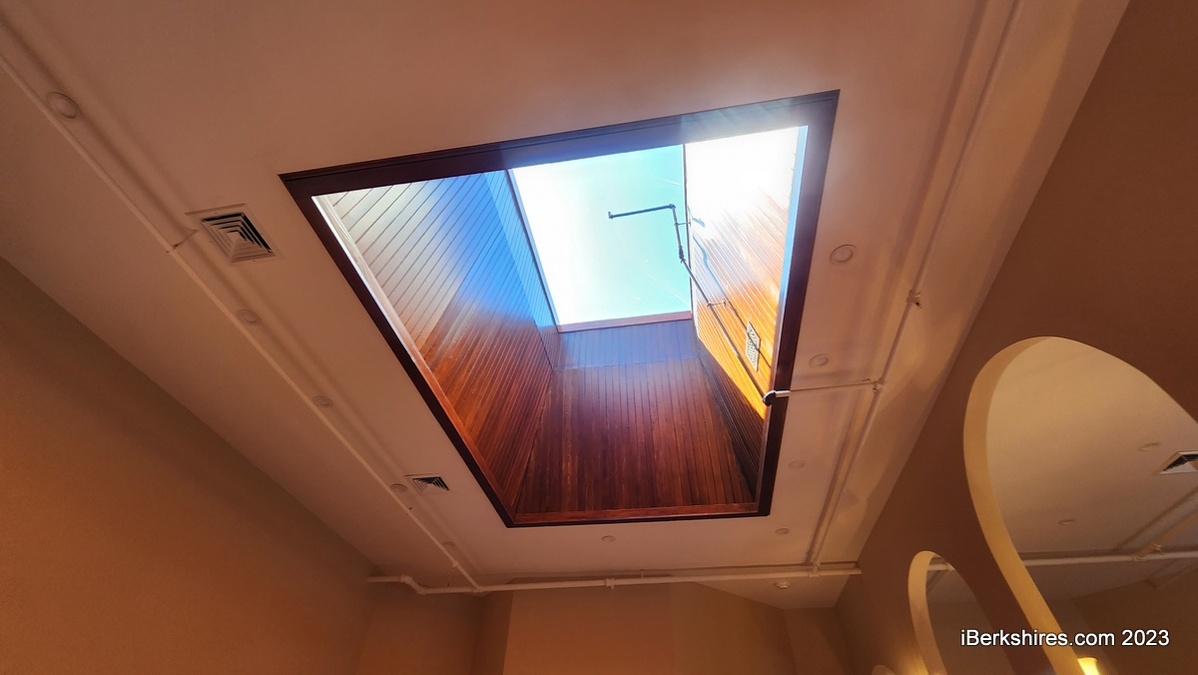
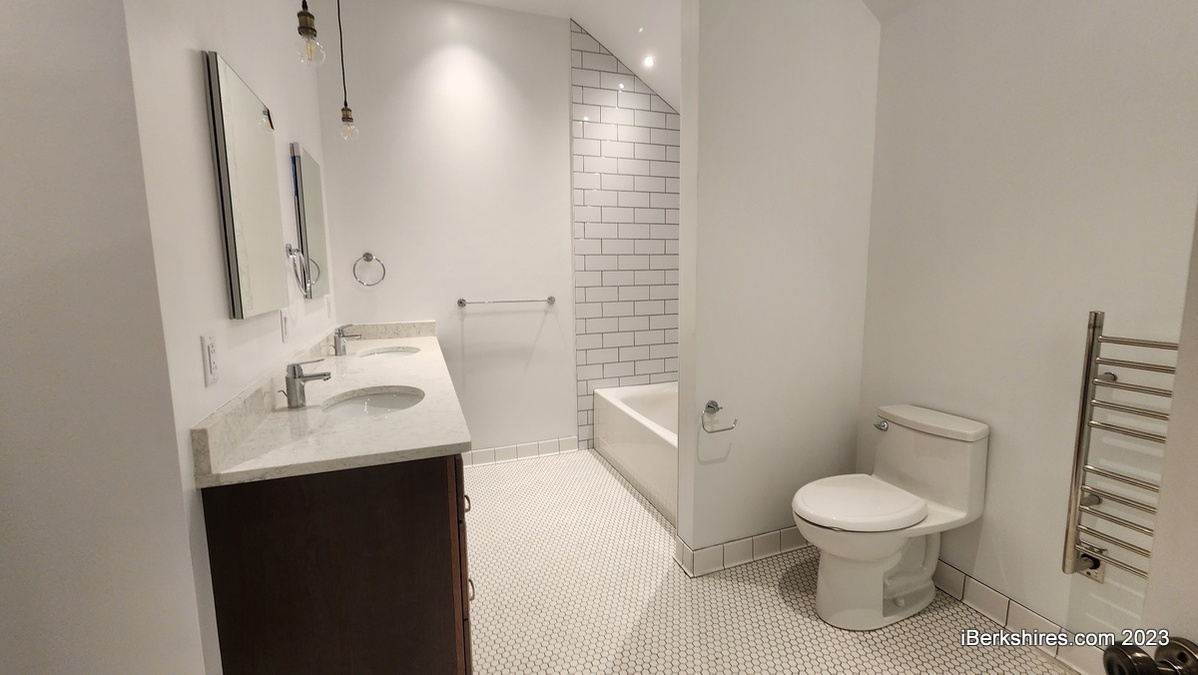
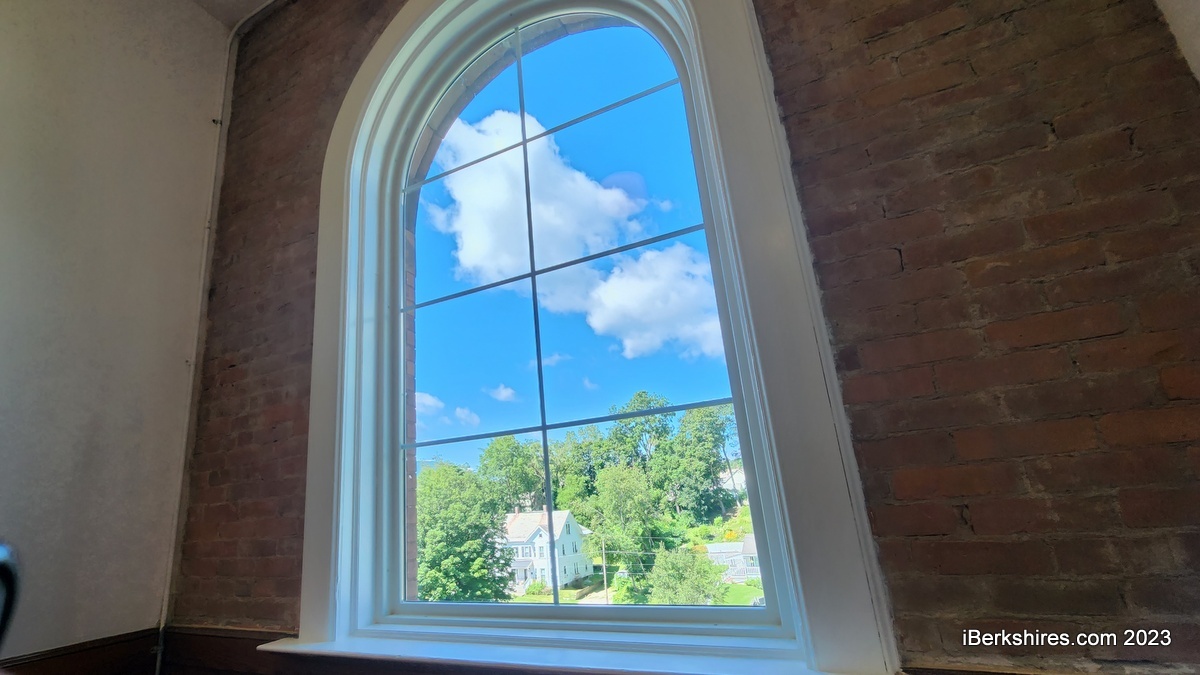
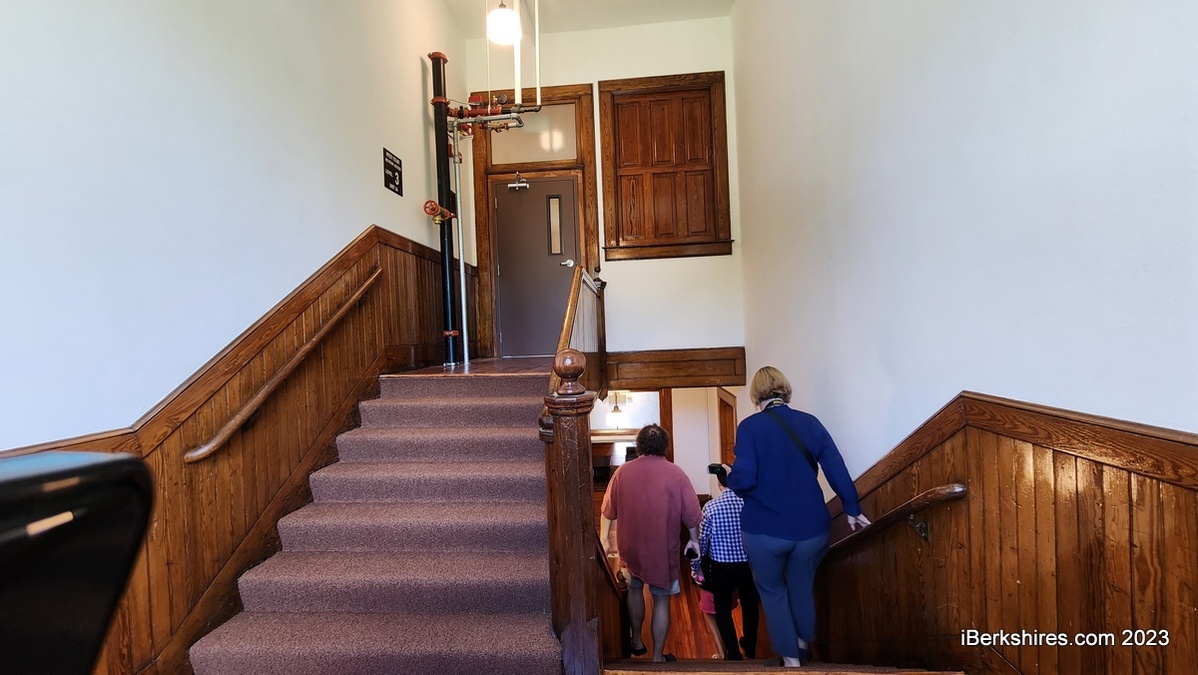
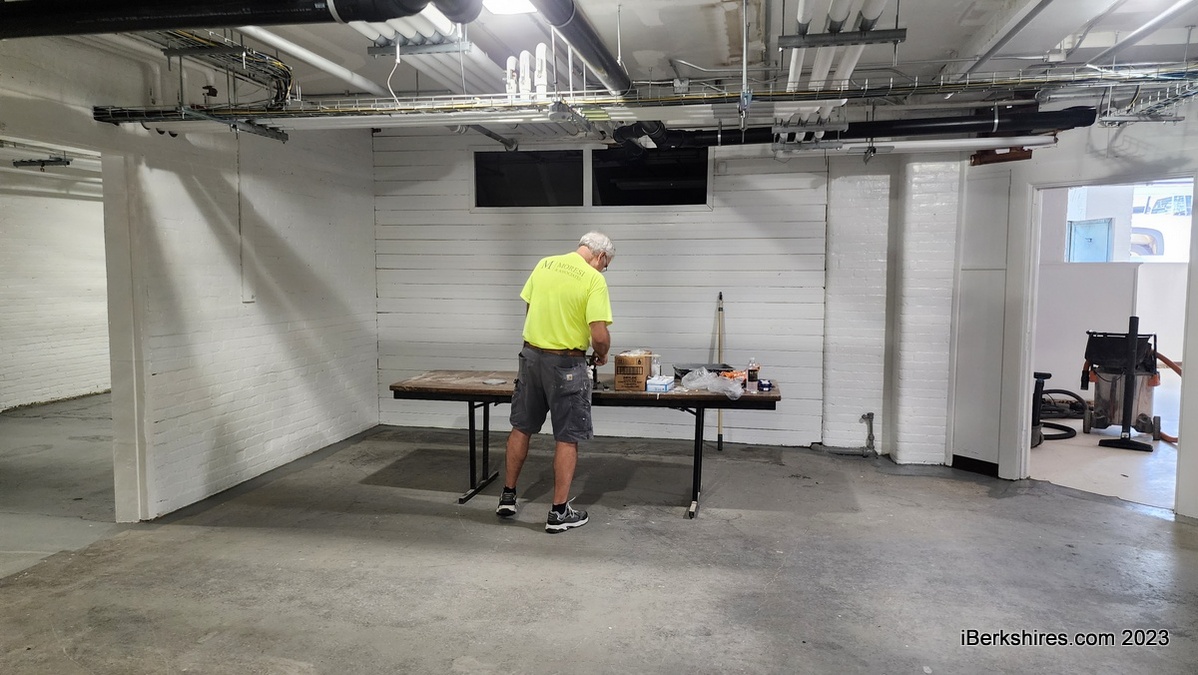
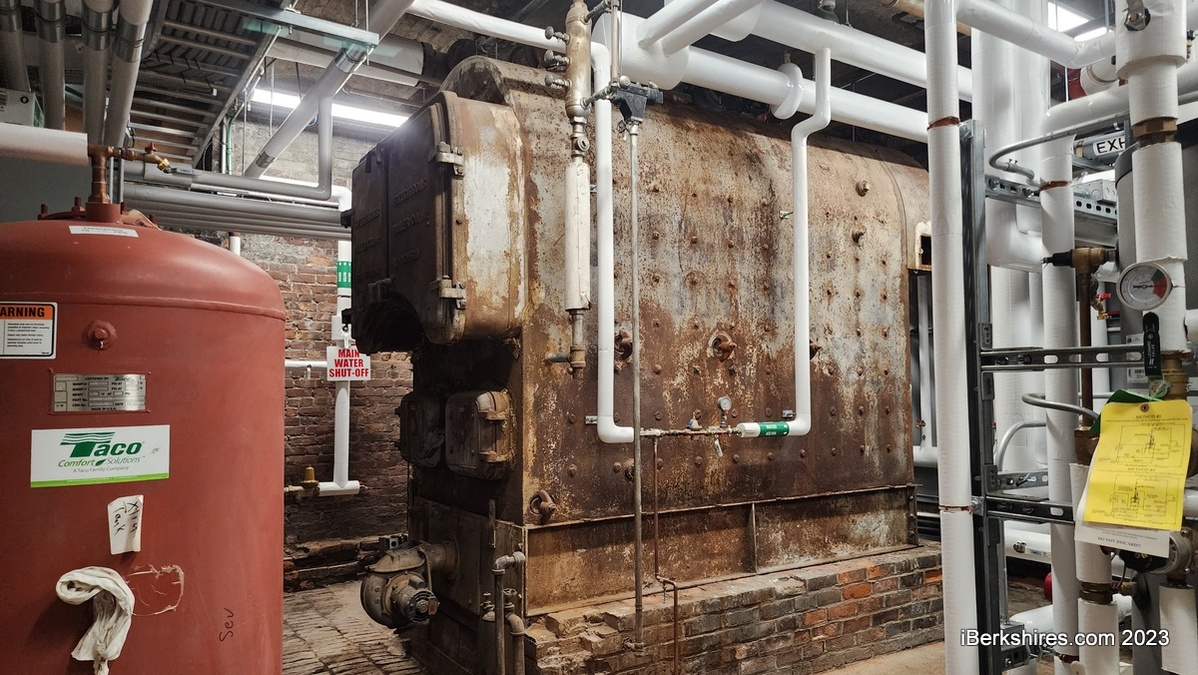
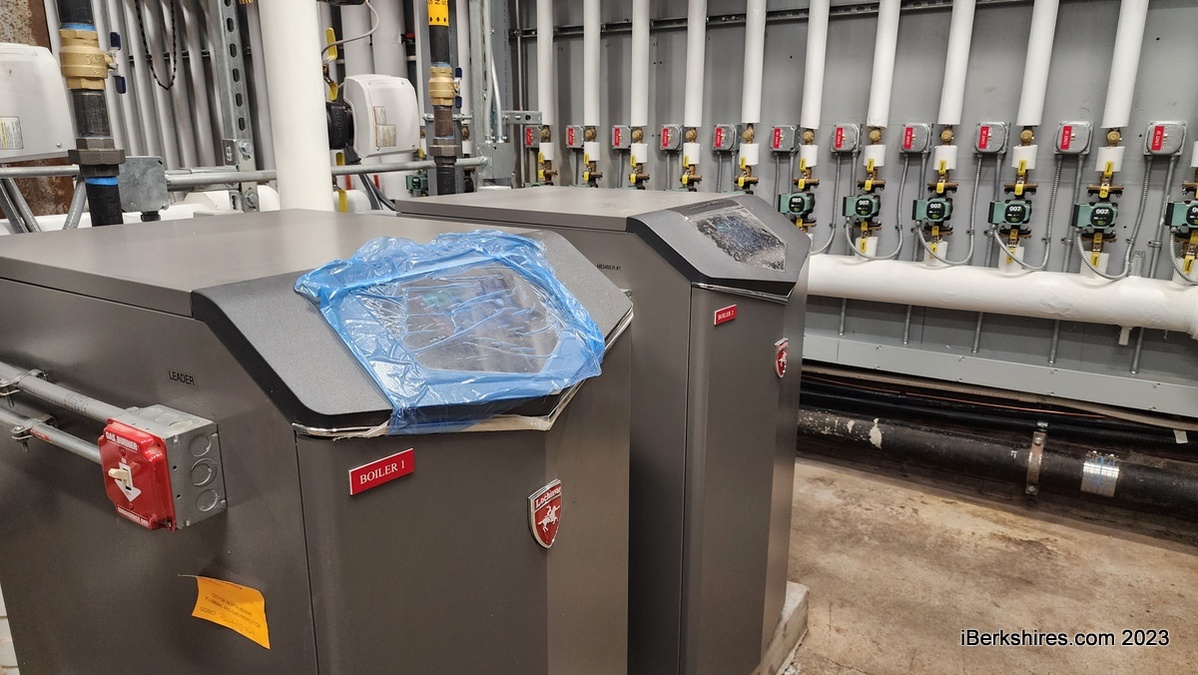
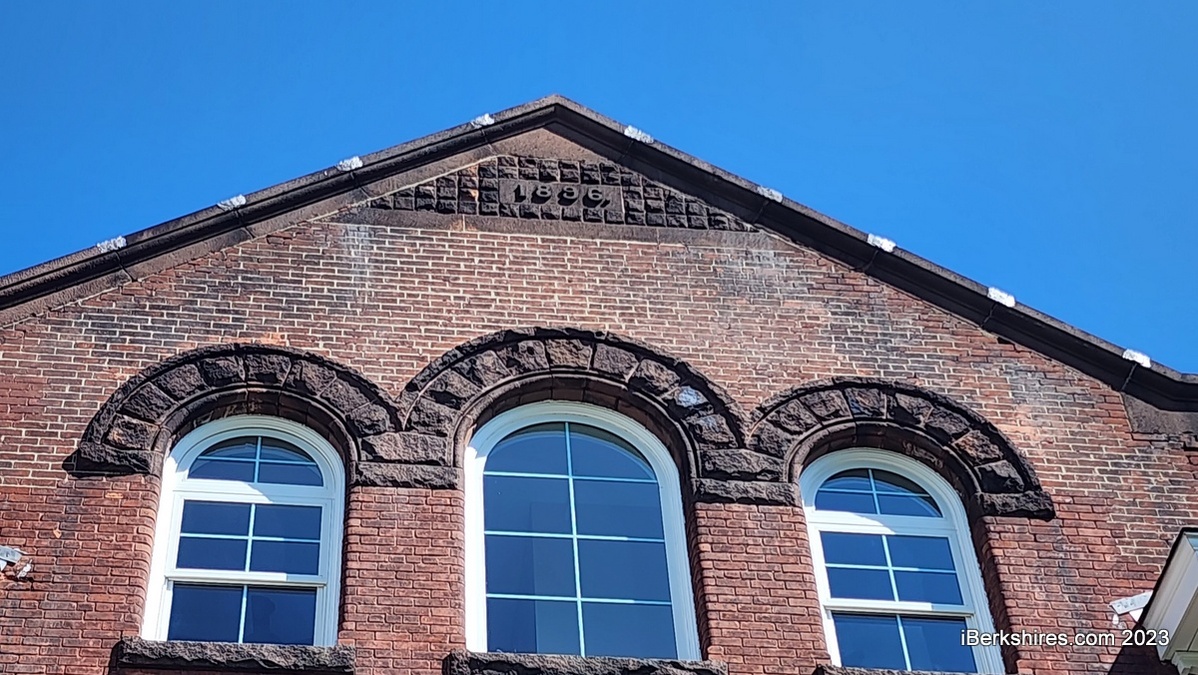
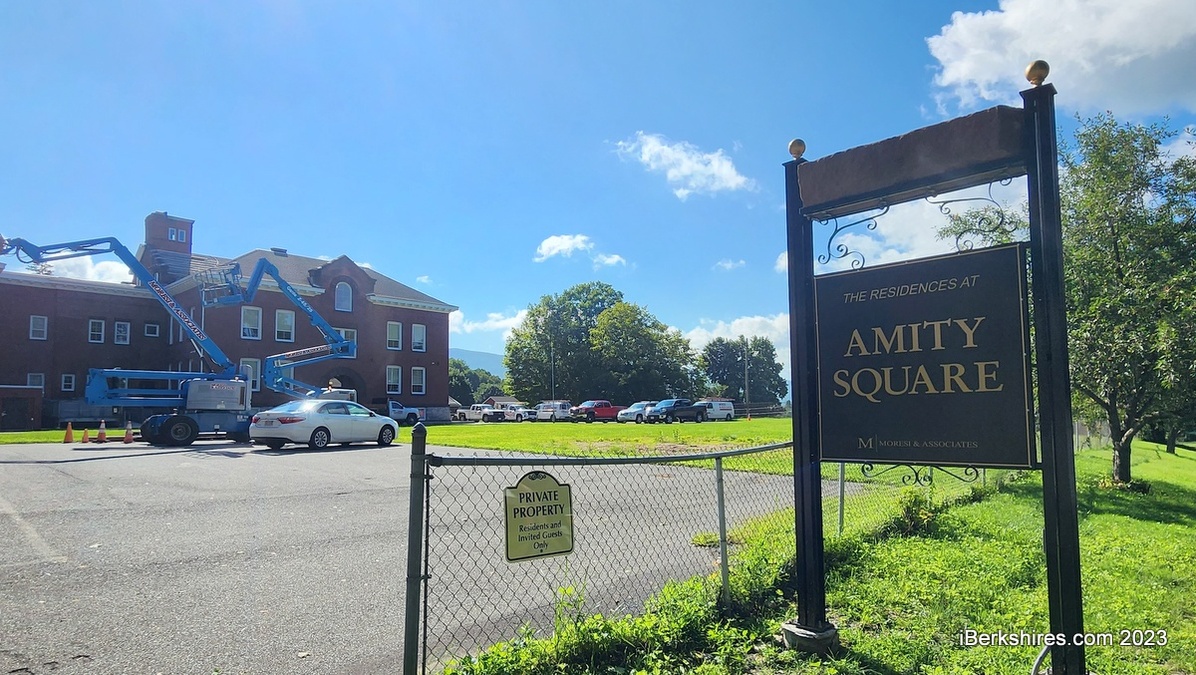
Former North Adams School Finding New Life as Up-Market Housing
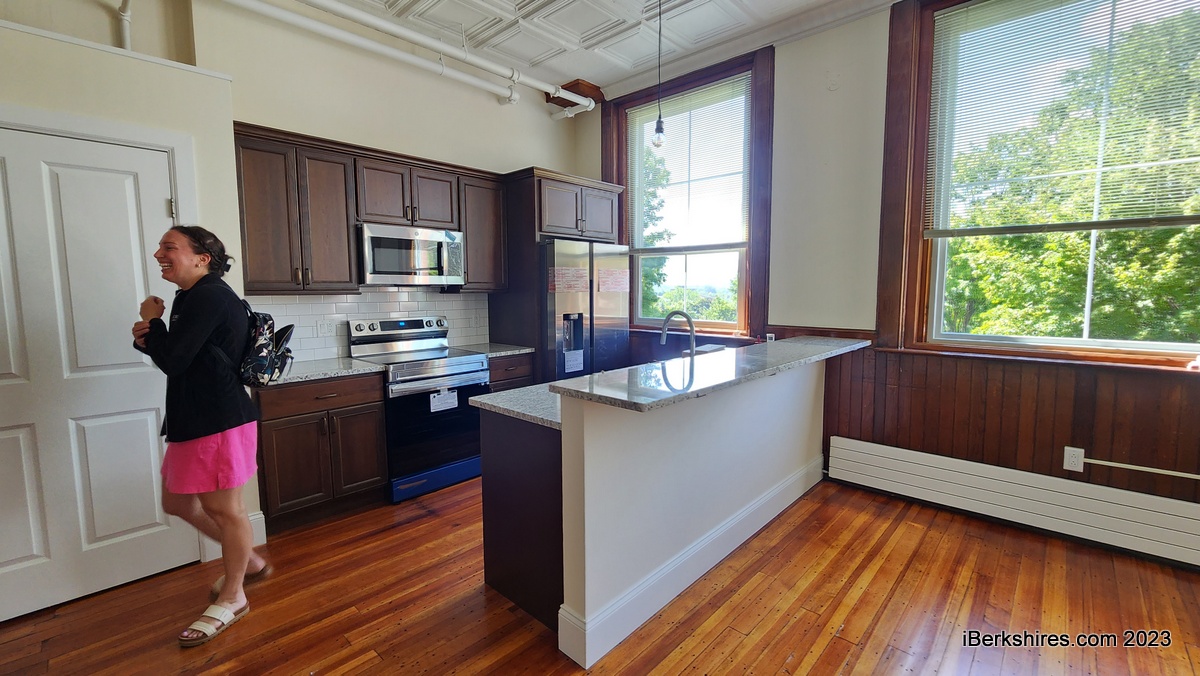
NORTH ADAMS, Mass. — It's taken nearly three years of construction and renovation to bring the former Johnson School back to its former glory — along with modern touches for contemporary living.
David Moresi, owner of Moresi & Associates, offered a preview of the new Residences at Amity Square ahead of an open house scheduled for Saturday, Aug. 19, from 10 to 4.
Tenants are expected to move in in September once final inspections are done.
Moresi purchased the former elementary school from the city in December 2020 for $225,000 and has invested about $2.5 million into creating 14 one- and two-bedroom apartments and a studio in the 1896 building. It had been occupied by Head Start for years before that organization departed to a new location in 2020.
"What took so long with the project wasn't building the apartments. It was all what you see here, which is the restoration of the building and the original floors," he said on Friday, standing in the first-floor common area with its wide wood molding and tin ceilings. Pointing to the floors, he continued, "these were all covered. They had plywood on them, they had carpet on them. These are the original floors, and they came out beautiful."
There were also delays as the project was slowed to accommodate the many projects Moresi's crew has working on in between, including at the North Adams Campus of Berkshire Medical Center and the refurbishment of the new Downstreet Hotel.
"It's been about 2 1/2 years of our ownership and the project itself, we pulled out of here for almost four or five months straight, because of just how busy the construction firm of our company was," Moresi said.
But the result is a building that former students and teacher will find very familiar — albeit the classrooms have greatly changed.
There are four one-bedroom apartments on each of the first two floors of the original 1896 building, along with a studio on the second floor and two two-bedrooms on each of the two floors of the 1920s addition. The main showpiece is the third-floor "penthouse" with views overlooking the city, 2 1/2 bathrooms, two bedrooms and large living and kitchen area.
Throughout the structure are reminders of the building's past, including more than 30 original schoolhouse lights that had been found under layers of dust in one of the attic spaces and a small tableau of old school desks. The old slate chalkboards were repurposed as deep windowsills.
"We had a real tough time finding stuff and a lot of the stuff you see on the walls is what we found way buried in the attics," Moresi said. "The other thing we did was we had gotten from the city the original blueprints. So those blueprints are the original hand-drawn blueprints from 1890s."
The brick Romanesque Revival offered both opportunities and challenges, particularly in the outfitting of classrooms that once held up to 50 pupils into living spaces. Initial plans had been for 20 apartments but that had to be scaled back to 14.
"We had to work within the original classrooms. These [interior classroom] walls are 4 feet thick," said Moresi. "So we had to work within the original classroom footprints. ... this was a challenge for me to figure out when and how are we going to get two-bedroom one-bath units in these classrooms.
The company turned to local Hill Engineers, Architects, Planners Inc., which he said "did an amazing job of the plan. And it worked out."
While the living spaces are small within some of the apartments, the common areas are expansive and furnished, providing an attractive shared space to create community. The property has plenty of parking, a fenced playground with a gazebo and picnic table and temperature-controlled storage and utilities in the basement. It also is completely accessibility with ramps, wide doors and halls and an elevator (that has an exclusive access directly into the the third floor penthouse).
The mechanicals and electronics are completely updated and heating, ventilation and cooling as well as hot water are included in the rent. Each apartment also has a washer/dryer combo and stove and refrigerator. The property will be managed in house.
The apartments are market-rate at about $1,800 for the two-bedrooms and $3,500 for the penthouse. Hannah Klammer, special projects and commercial leasing manager, said there is a waiting list for the apartments.
"We're not just pulling these numbers out of the air, we're doing similar rentals," said Moresi. "As I always say, if there wasn't a demand, we wouldn't do this type of housing."
Moresi has a track record of old building conversion, turning the former Wall-Streeter Mill on Union Street into housing and commercial office space, and the redevelopment of the Mulcare Block on Marshall Street. His largest project to date is the Norad Mill with its more than 50 commercial tenants, the reception hall 3 West and the company's headquarters. The developer said he couldn't do the types of projects he has without the team of carpenters, electricians, and skilled labor he's put together.
Next up is the Notre Dame property on East Main Street that Moresi picked up from the city for $10,000. The former will be turned into residences and the church into some type of community space.
"Notre Dame excites me more, because it's a simple box," he said. "We know it in and out. We know we have a great process. We know what works, we know how to work around some of the more complex intricacies that you find."
But, there's also the project to restore North Adams Regional Hospital the company's already working on. And Moresi laughed, "I need a break."
Tags: historic buildings, housing, renovation,

.jpeg)
